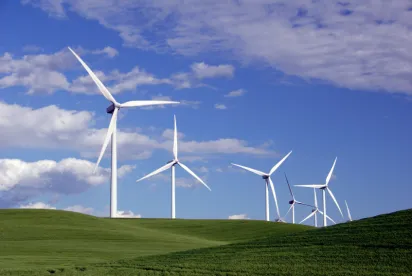Much like the Trump administration focused its early efforts on reversing Obama administration actions, President Biden will spend much of his first two years tackling issues that had been the subject of Trump-era “rollbacks.” Biden has been vocal about his intention to undo many Trump administration actions, particularly regarding climate change and reversals of Obama administration environmental rules. While certain initiatives depend on a cooperative Congress, we expect the Biden administration to hit the ground running on the Paris Climate Agreement, climate change, environmental justice enforcement and permitting.
Biden has signaled his intention to re-join the Paris Climate Agreement, which can be done by executive order since the United States’ withdrawal was not done by Congress and was only final as of November 4, 2020. Given that U.S. emission levels are likely on track to meet the current Paris trajectory, Biden has called for stronger commitments, not just from the U.S. but from all parties. Rejoining he can do quickly; renegotiation would take time.
Voters say they want climate action, but don’t expect Biden to begin pushing for a carbon tax, even though he has supported the idea in the past. The economic recession makes taxes difficult to swallow and the left has noted that taxes don’t require emissions reductions or address environmental injustice. Even the House Democrats’ $760 billion transportation and climate bill relied on mandates rather than taxes to create an indirect tax on carbon. That’s why we expect a regulatory structure like a Clean Energy Standard and an innovation agenda to remain front and center.
Environmental justice (EJ) is a growing focus for the President and Congress. Biden will make it a priority across all federal agencies to promote environmental justice initiatives that could condition permits, target enforcement and become a basis for setting standards. Congress will continue its parallel EJ initiatives and oversight of companies’ impacts on frontline communities. More broadly, expect Biden to empower his EPA and DOJ to pursue enforcement actions, both traditional environmental criminal enforcement as well as plaintiff-driven climate litigation – and expect him to call for backup via Congressional oversight.
On the regulatory front, there are hundreds of possibilities – including revoking Trump executive orders, guidance documents or regulations that are not quite complete or still being challenged in court. Look for Biden to repeal the series of executive orders and other initiatives designed to reduce regulatory burden, most recently including proposals to clarify provisions of the Clean Water Act that complicate infrastructure development, including the Waters of the U.S. Rule and Section 401 of the Clean Water Act, as well as changes to the implementing regulations for NEPA analyses.
Also on the chopping block: the 2017 “two for one” regulatory order, and the 2017 E.O. maligning the Clean Power Plan (CPP). Biden has said he would restore the CPP (or the rationale for the mercury rule), but these have legal obstacles in their way and have largely been overtaken by events. Expect the usual moratorium on late-breaking Trump administration regulations. Additionally, with Kamala Harris as vice president, expect the Biden EPA to reinstate the California waiver and pursue significantly more aggressive fuel economy standards for cars and trucks.
The Biden administration will have more specific opportunities to achieve aggressive clean air targets via the air quality standards – called NAAQS - review process and the rejiggering of the social cost of carbon (SCC). It would take two Presidential terms, but Biden could lower the NAAQS for ozone and PM2.5 and then adopt a more stringent cross-state air pollution rule, making it harder for coal- and natural gas-fired power plants to operate. Changing the SCC methodology would not go unnoticed, but by increasing the current value, rulemaking to reduce greenhouse gas emissions becomes easier to justify, and permitting obligations become more difficult to meet.
Overall, the focus of the Biden administration will largely be on taking a more aggressive approach on environmental and climate issues, and increasing enforcement against industry, particularly in the environmental justice space. If this includes empowering his DOJ to support climate change lawsuits, Biden could grant these plaintiff-driven cases more credence. While these suits have had little success thus far, strong federal support for plaintiffs’ actions could improve their chances because many judges pay close attention to DOJ’s views. As many observers have noted, the current Supreme Court and the change in balance of lower federal courts is likely to be a check on the most ambitious climate change lawsuits, but the high court can hear only a limited number of cases that those that make it to the Court may find limited success. With White House encouragement, we are likely to see more states and cities filing climate change and similar lawsuits. Companies in the energy and manufacturing space will be well-advised to analyze their exposure to potential EJ claims, potential climate-related actions from all fronts, and potential oversight and investigations.
*Eric Washburn, President and CEO of Windward Strategies and Bracewell PRG Consultant, contributed to this article.






 />i
/>i
